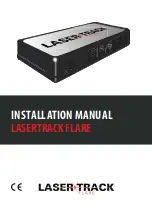
Loading and Unloading and Transport of ATV
An ATV can be loaded on or off a vehicle safely providing the proper
technique is used. Failure to do this can result in serious injury or death.
The most suitable vehicle for transporting your ATV are:
•
Trailer - Box, Tilt, bike or car trailer.
•
Utility - Tray or flatbed
•
Truck
When loading the ATV on to another vehicle please keep the following
points in mind.
•
Remove any loads from the ATV.
•
Check that the ATV is in first gear low range.
•
If using ramps make sure they are secured to the back of the vehicle
or trailer.
•
Ensure that the wheels are centred over ramps.
•
Do not exceed the ramps specified carrying capacity.
•
Make sure the vehicle tray is clear of any obstacles.
•
Check that the vehicle being loaded is in gear with the engine off and
park brake on.
•
Use 4WD if fitted
Suitability of Loading and Unloading Sites
When loading or unloading your ATV it is essential that you choose a
suitable loading and unloading site to ensure maximum safety.
Securing Your ATV
Once you have successfully loaded your ATV it must be secured cor-
rectly to the transport vehicle. Keep the following points in mind.
•
Remove any load from the ATV.
•
Make sure the the ATV is centred on the vehicle to ensure correct
weight distribution.
•
Use only approved straps and harnesses to secure the ATV.
•
Ensure that all straps are in good condition and working order.
•
Make sure the ATV is secured at both the front and rear of the vehicle.
•
Secure straps to approved parts of the transport vehicle.
•
Make sure all other objects are secure to ensure that the ATV is not
damaged by shifting loads.
•
Mount chain, ropes or tie downs to strong fixture points on your ATV
and transport vehicle.
Chapter 8 - Quiz
1. “Reading the terrain” means to observe and understand the features
and characteristics of the land.
True
False
2. The best “lines” to pick are those that include obstacles and uneven
terrain. True
False
3. ATV riders should consider the consequences of their choices such
as at what speed to travel and what path to take. True
False
4. An ATV can easily travel through slippery mud and deep water.
True
False
5. Soft snow is more easily negotiated than firm snow.
True
False
6. Ice of any thickness will support your weight as well as the ATV’s.
True
False
7. Riding on sand or on sand dune terrain requires special considera-
tions. True
False
8. ATV riders should make themselves visible to other riders.
True
False
9. A danger of crossing the road is that driver’s in traffic fail to see
ATVs.
True
False
10.The effects of alcohol create a negative influence on each step of
the SEE process.
True
False
Riding Strategies
Chapter 8
17









































